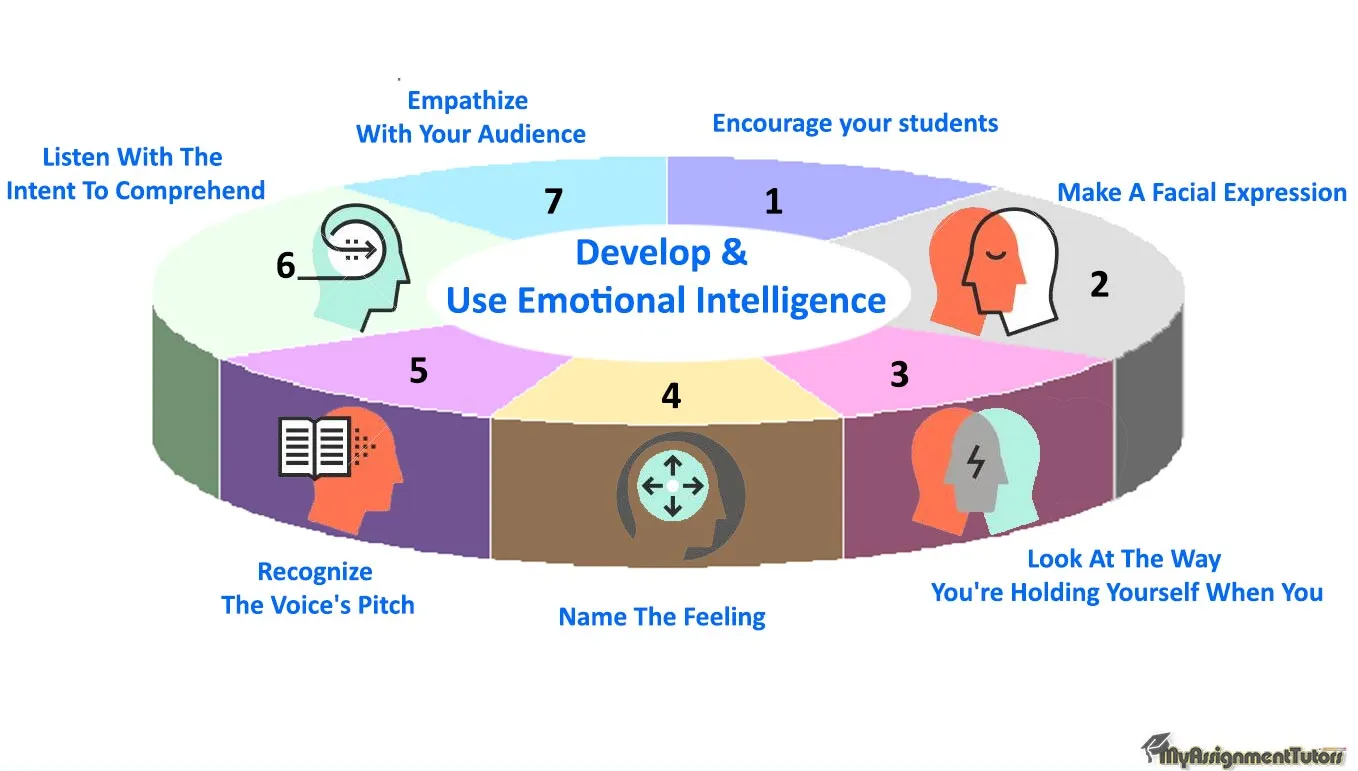Develop And Use Emotional Intelligence
Different viewpoints of emotional intelligence and examples
When you're growing up, you learn how to empathies with other people. The practice of sharing crayons begins in kindergarten, when children are taught how to do so. To avoid damaged feelings on the playground, we become more tolerant of others who are different from ourselves. Many of our social contacts, whether at home or at school, now place on a screen rather than face to face, posing particular challenges to that element of human development. We must not lose what makes us human, according to Helen Rises, head of the Empathy and Relational Science Program at Massachusetts General Hospital. A clinical professor at Harvard Medical School, Dr. Rises adds, "People are growing more accustomed to gazing at displays with text than understanding people's facial expressions." There's a wealth of emotional information and connection in that location.

Strategies to improve emotional intelligence and its assessment
- The different ways to develop emotional intelligence are as follows:
- Encourage your students to make eye contact with each other-
- Make A Facial Expression-
- Look At The Way You're Holding Yourself When You-
- Name The Feeling-
- Recognize The Voice's Pitch-
- Listen With The Intent To Comprehend-
- Empathize With Your Audience-
When it comes to empathy, there is a mind-body link. Making eye contact with the person we're talking to might boost our self-esteem and make us feel more important. Bring up eye contact as a communication tactic.
Sometimes, younger children are given images of faces and asked to determine what emotion they are expressing by reading the expressions on the faces. Make sure that the pupils' faces reflect the emotion.
Ask pupils to see if their buddy is slumped in their chair or gazing downward?? Alternatively, do they appear to be sitting erect and jovial? There are a few clues that might help you understand what someone is saying without listening to them.
Even identifying the emotion you are experiencing might help you better comprehend it. Is he or she joyful, angry, or lost in thought?
The tone of our speech, like our facial expressions, may reveal a lot more about our sentiments than we intend. Think about how many times you’re exasperated tone of voice has unintentionally revealed your annoyance with your spouse or your child. There is good news: Tone of voice is something that can be practiced! When you're being dishonest or condescending, demonstrate what it sounds like. The next step is to have the kids rehearse what it sounds like when they are being sincere and complimentary. There are distinctions that are slight.
Students should be encouraged to listen with the purpose of comprehending, rather than reacting. Attention to facial expressions, posture and voice tone can assist your students fully understand what the speaker is saying.
When you respond with empathy, you show the other person that you care about them. This is also a tough talent for adults to master. The individual should not be given counsel, one-upped, analyzed, or corrected. A simple acknowledgement of the speaker's presence is sometimes all that's required to make them feel understood.
Conclusion
It has been Rises' goal to provide empathy training to help medical professionals become more aware of nonverbal communication with their patients through her work and her firm, Empathetic. It was remarkable how much the participants improved after only three hours of training in verbal and nonverbal judgments and responses to others as she puts it: "Empathy is a brain-based capacity." Basically, it's the ability to comprehend and sense other people's ideas, feelings, and situations. As a result of our assignment help, students learn how to respond in a polite and compassionate manner by listening carefully and expressing curiosity about the other person's circumstances."



